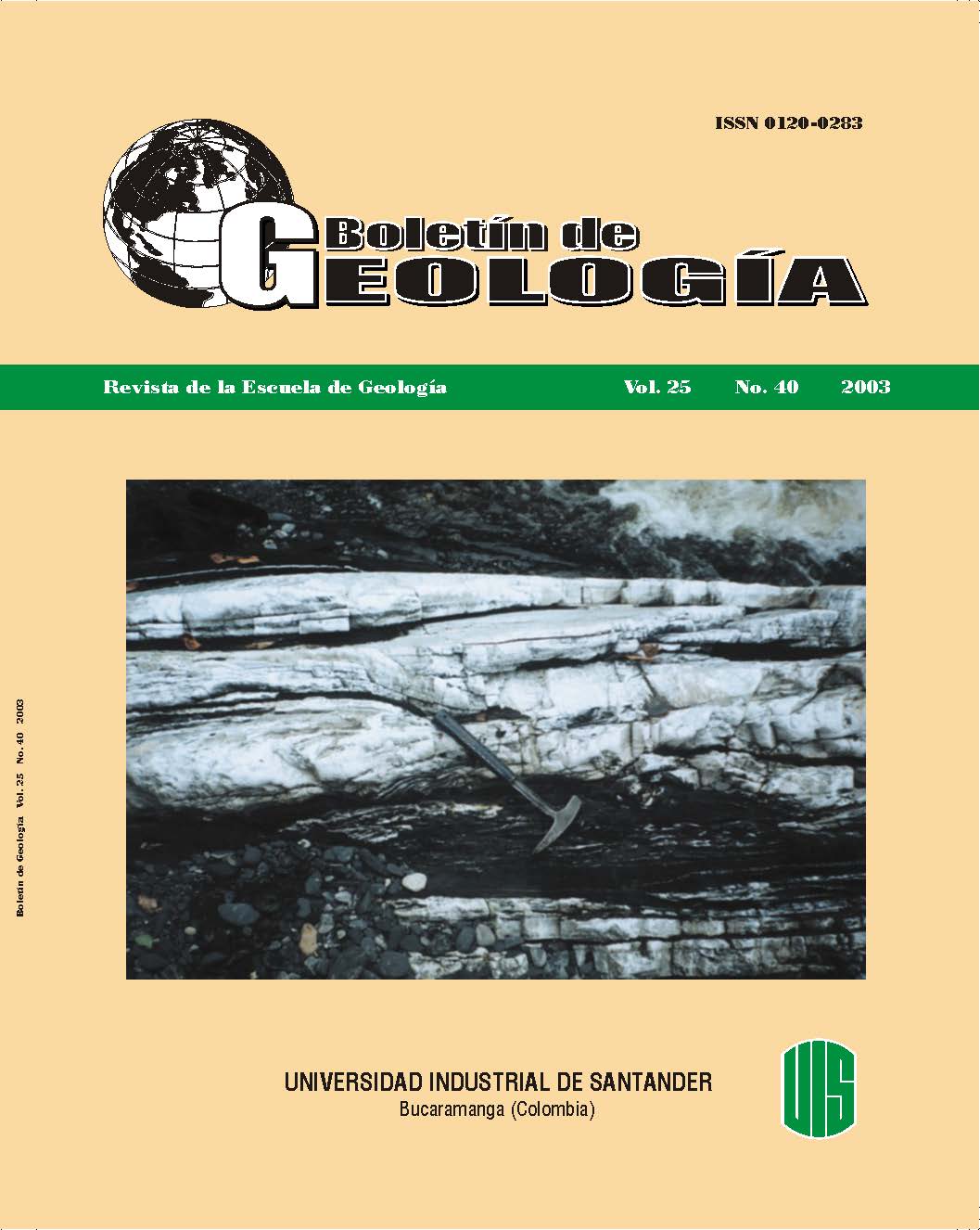Comparative fluid inclusion studies of the San Martín skarn (Mexico) and the epithermal Comstock Lode (USA) and Pachuca-Real del Monte (Mexico) deposits
Published 2003-08-28
Keywords
- Silver-Base Metal Deposits,
- Fluid inclusions,
- Microthermometry,
- Epithermal
How to Cite
Abstract
The San Martin (Mexico), Pachuca-Real del Monte (Mexico) and Comstock Lode (USA) are base-metal and silver deposits within Cretaceous to Tertiary volcano-sedimentary host rocks. The first is a skarn type deposit whilst the second and third are epithermal vein-type deposits. A fluid inclusion study of quartz, sphalerite and fluorite was undertaken to characterize mineralizing solutions which have different compositions and temperatures. Microthermometric measurements were made based on the recognition of changes of twophase liquid-rich, two-phase vapor-rich and multiphase (NaCl) inclusions during heating and freezing experiments. Homogenization temperatures and salinities of fluid inclusions in quartz and fluorite from San Martin range from 300 to 320 °C and 5.0 to 40 eq. wt. % NaCl based on Tmice and TNaCl. Halite as a daughter mineral is often present in quartz and fluorite. However in the other districts, the Th and salinity values in sphalerite (Pachuca-Real) and quartz (Comstock) are lower: 265 °C and 3.4 % eq. wt. NaCl and 251 °C and 0.3 eq. wt. % NaCl respectively. Data from a single zoned quartz crystal provides evidence of fluid evolution at the Comstock Lode. Temperatures and salinities observed were 249 °C and 0.6 eq wt % NaCl at the core and 245 °C and 0.1 eq wt % NaCl at the rim. The salinity and temperature of the hydrothermal brines seems to be an important factor in explaining the precipitation of the ore minerals. These deposits are characterized by temperatures <350 °C and salinities from 0.2 to 4.93 wt % eq. NaCl. Estimated pressures and depths range from 41 to 103 bars and 472 to 1394 meters.
